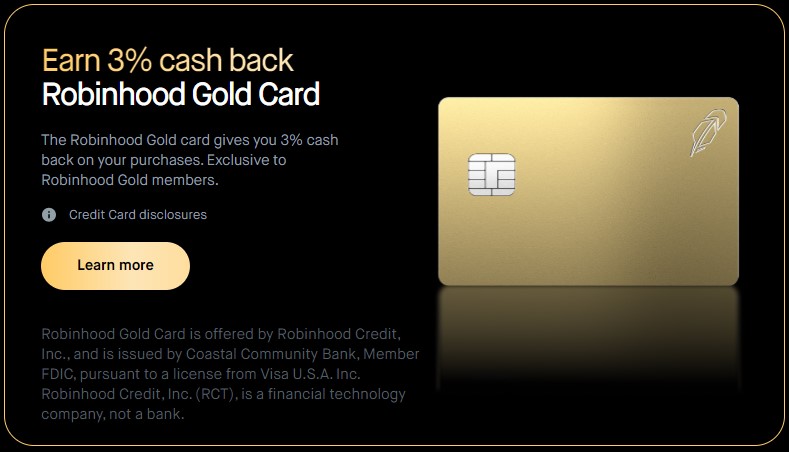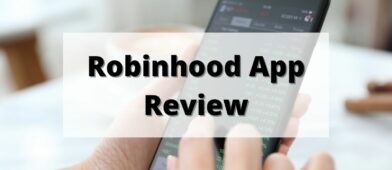Robinhood Gold is a $50 per year premium subscription (or $5 a month when paid monthly) from Robinhood that offers perks you won’t see anywhere else.
In a world in which brokerages are finding ways to charge you less, is Robinhood trying to be the Costco of brokerages?
In this post, we break down each perk of Robinhood Gold, from most appealing to least, to help you decide whether it’s worth it for you.
📔 Quick Summary: Robinhood Gold is worth it if you will use their 3% cashback credit card and if you take advantage of the 3% IRA match. Those two are the main noteworthy perks but one where the benefits outpaces the annual fee. The other benefits are nice but they’re not anything special.
Table of Contents
3% IRA Match
This is, by far, the best perk of Robinhood Gold.
The Roth IRA contribution limit for 2024 is $7,000 ($8,000 for those ages 50 and older). If you contribute the maximum, your Roth IRA actually gets $7,210 added in a year.
That’s an extra $210, offsetting the $50 per year fee.
⭐ For a limited time, until April 30th, 2024, Robinhood is offering a 3% match on new qualifying contributions and transfers to a Robinhood IRA when you have Robinhood Gold. You have to keep Robinhood Gold for at least a year and keep your funds in the account for five years.
3% Cash Back on the Robinhood Gold Card

Robinhood just added a new perk (as of March 2024) to the Robinhood Gold offering – a flat 3% cash back on all purchases made on the Robinhood Gold card. It hasn’t been released yet, but it’s being marketed now.
You read that correctly – 3% cash back on all purchases. No categories to remember. Nothing to “activate.” Just a straight 3% cash back.
No annual fee (besides what you pay for Robinhood Gold), no foreign transaction fees, and you even get 5% cash back when you book through the Robinhood travel portal.
You also get a lot of the same insurances that come with other cards such as:
- Trip Interruption Protection
- Purchase Security
- Auto Rental Collision Damage Waiver
- Extended Warranty Protection
- Return Protection
- Zero Liability Protection
- Visa Signature Concierge Service
- Travel and Emergency Assistance
- Roadside Dispatch®
5.00% APY on Cash
Meh. The money in my brokerage account should be invested and not sitting in idle cash. I might have a little cash, from distributions or dividends, but I’m not looking to leave a large lump sum there.
That said, brokers typically have money market accounts that pay a high yield. At Vanguard, it’s the VMFXX and it has a competitive yield (5.26% as of this writing with a 0.11% expense ratio).
At first glance, it’s an appealing headline but it’s a standard benefit.
Instant Deposits (Up to $50,000)
When you deposit funds into Robinhood, it can take a few days for them to get there.
If you’re transfer status is in good standing, you can get a perk known as “Instant Deposits” which is normally limited to $1,000. For Robinhood Gold, you can get up to $50,000.
Other brokers offer this too, which I couldn’t figure out how much my limit was at Vanguard. I know I’ve transferred in close to $10,000 and had instant access to it.
Lower Margin Rates
With Robinhood Gold, your $1,000 or margin borrowing is free and then they charge you 8%. Without gold, the margin rate is 12%.
I don’t trade on margin so margin rates don’t matter to me.
Nasdaq Level 2 Data & Morningstar Insights
Personally, I think Nasdaq Level 2 data is really fun to look at because it gives you greater insight into how the market looks. Knowing the current price of a stock is great but when you see the order book, it provides a bit more clarity into where the market is around a stock.
That said, I first saw it over on thinkorswim, before it was acquired by Charles Schwab, and it was included in the base service.
As for Morningstar benefit, it’s access to the stock research reports which covers around 1,700 stocks. It doesn’t appear to be full access to Morningstar Investor, which costs $249 a year.
Is Robinhood Gold Worth It?
If you intend to put your IRA there, especially a Roth IRA, then Robinhood Gold’s 3% match is reason enough to get this perk. If you contribute the maximum, the match far exceeds the subscription fee… and the match doesn’t count towards your contribution limit.
If you were able to take advantage of the transfer bonus, it’s even more appealing because you can transfer in a large sum, get the 3% match, and then cancel Gold after one year. Once you keep your cash in there for five years, you’re free to do whatever you want without losing the match.
Beyond the match, the other perks are nice but nothing noteworthy.




Leave a Comment: